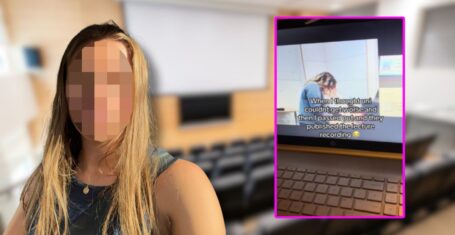
I learned the best interview habits to land my dream job by practising with the Meta Quest 3
This is a serious game changer
As I looked across the table at my interviewer I made sure I was sitting upright with my hands neatly clasped in my lap. The room was minimally but tastefully decorated and I started to run through my previous experience in preparation for the first question she was going to ask me.
It doesn’t matter how many job interviews you do, they’re always quite nerve-wracking. I waited with bated breath before she asked me, “How many square metres of pizza do you think is consumed in the UK every year?” My mind went blank, I panicked and ended up in a fit of laughter. Taking a pause, I took off the Meta Quest 3 mixed reality headset and took a moment to compose myself.
Thankfully for me, this wasn’t actually a real-life job interview because, let’s be honest, I would have probably blown it with that reaction. Instead, this is the newest cutting-edge software from Bodyswaps, a creator of immersive AI simulations working with Meta’s boundary-pushing Quest 3 MR headset to deliver quality skills training at scale.
Here, they’re using the Meta Quest 3 headset to teach soft skills training, such as life skills and employability skills – ideal for students to set them up for the next step. If you’ve ever blundered a job interview and wished you’d been able to practise first then this software is just the ticket!
I was lucky enough to get to spend the day trying out the Bodyswaps software alongside students at Burton and South Derbyshire College. They’ve already been using the software for the past academic year as part of the Interview Simulator Module, and every student I spoke to was a massive fan of both the headset and the simulation technology.

So, what actually happens when you put the Meta Quest 3 on and fire up Bodyswaps’ training tool? The headset itself is genuinely very comfortable and I knew it would be immersive but I was still taken aback by just how lifelike everything was.
You can pick from a huge variety of skill training options including conflict resolution and workplace communication. I decided to go straight into the deep end and start the mock interview where you can choose whether to record your answers using your microphone or pick from multiple choices, so I chose to record myself.
I was asked a variety of different questions including ‘What is something you’ve learned recently?’ as well as ‘What is something negative and positive your previous boss did?’. Once I felt ready to answer I pressed record and away I went, trying to keep my answers fairly concise as I know I can be a bit of an interview chatterbox.
When you’re happy with your response you then swap places with the interviewer to literally get a look at your virtual self answering the questions. This means you have to listen to your voice and watch your posture and hand movements. As vaguely cringe as this can be the first time around, you do get used to it and I have to say it was genuinely really helpful to see how I would come across in an actual interview.
There’s nothing worse than when you see a video of yourself and realise you have poor posture or you notice you twirl your hair in your fingers a lot when you’re nervous. Sometimes you can think you’ve smashed it but then you don’t get the job, and you wonder what went wrong?
Well, during your time in the Bodyswaps interview training software, you get an in-depth analysis of how you performed after each question. And let me tell you, as someone who thought they generally do okay in interviews, it was an eye opening and very informative experience.
Not only did I get to watch myself back, but the AI software gave me a rundown of everything I did well and what I could improve upon. It monitored how many filler words I used, how quickly I spoke and even whether I used one too many hand gestures.
I learned my eye contact is top notch but I tend to speak way too quickly. In my short time using the software I already felt like I had discovered a huge amount and really wished I could have used this when I was first interviewing for graduate jobs.

The students at the college explained to me how helpful it is to get tailored feedback for each answer you give, with users being given scores on their level of eye contact, hand gestures and filler words, amongst others. The mock interviews allow students to practise the same or different questions as many times as they like, with the intention of improving their overall scores over time.
But don’t just take my word for it, three of the students I chatted to had applied the feedback they were given in the Meta Quest 3 headset to an actual real-life interview and all of them were successful in their applications. The results definitely speak for themselves!
Assistant Principal and Dean, Chris Beech, and Learning Technologist Zoe Tierney are also massively enthusiastic about the opportunities both the headset and Bodyswaps software have given students at the college. They wanted to find a tool that could be included in the student’s personal development tutorial system which supports the college’s Skills Promise, and could allow “students to identify what they’re not good at and Bodyswaps has entirely aligned with that. You put the headset on and you think ‘This is great, this works.’ It demonstrated why MR and immersive technology have a place [in education].”
Whilst some might say that fluffing up in an interview is all part of the process and character-building, it’s not very enjoyable! At least with Bodyswaps and Meta, you can experience all your embarrassing moments in the virtual world instead of the real one. It was such a fun experience, and if you don’t mind I’m off to try and get my words per minute down, see you in a few days…
If you want to learn more about all the incredible features the Meta Quest 3 has to offer, click here. And if you’re looking to up your interview game with Bodyswaps technology you can find more about them here.















